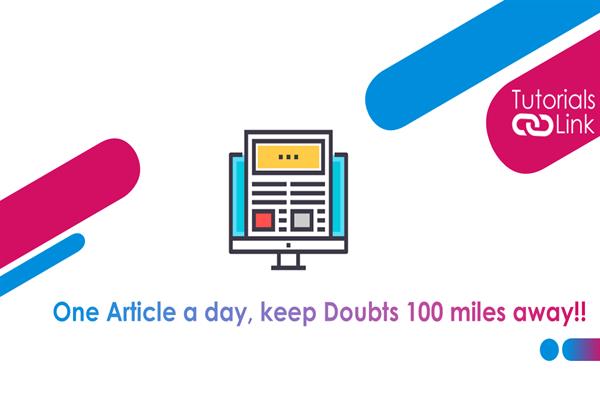Coinpedia Layer 2 Fees and Activity: Tracking Growth Across Scaling Networks
Introduction
Scalability has always been the elephant in the room for blockchain networks. As more people enter the crypto space, transaction costs climb, and activity on the base layer often slows down due to congestion. Ethereum, for instance, has faced high gas fees in the past, making everyday transactions impractical. This is where layer 2 networks come in.
Scaling networks like Optimism, Arbitrum, Base, and zkSync are designed to reduce fees while processing thousands of transactions quickly. But how do we measure whether these solutions are working? That’s where Coinpedia Layer 2 Fees and Activity reports come into play. By tracking transaction costs, user growth, and adoption trends, Coinpedia offers investors and enthusiasts a clear lens into the progress of scaling technologies.
In this article, we’ll break down how fees and activity are shaping up across major layer 2 solutions, why it matters for the broader crypto market, and what the future may hold.
What Are Layer 2 Networks?
Before diving into the data, it’s important to understand what layer 2 means. In simple terms, a layer 2 solution is a separate chain built on top of a main blockchain (layer 1). Its purpose is to handle transactions more efficiently and feed the results back to the main network for settlement.
For example:
- Optimism and Arbitrum use optimistic rollups, bundling transactions off-chain before submitting proofs to Ethereum.
- zkSync and StarkNet use zero-knowledge rollups (zk-rollups), which compress transactions into cryptographic proofs for faster verification.
- Base, developed by Coinbase, focuses on making Ethereum more accessible with lower fees and an easy user experience.
These scaling solutions aim to reduce costs, increase throughput, and make decentralized applications (dApps) more usable.
Coinpedia Layer 2 Fees and Activity: Why It Matters
Tracking Coinpedia Layer 2 Fees and Activity provides valuable insights into:
- Adoption Trends – Rising activity signals that users and developers are shifting to cheaper and faster solutions.
- Network Health – Consistently low fees suggest scalability improvements are holding up even during busy times.
- Investor Confidence – Lower transaction costs and growing activity can indicate strong fundamentals for tokens associated with these ecosystems.
For investors, developers, and traders, this data helps identify which scaling networks are thriving and which still face challenges.
A Look at Current Fee Trends
One of the clearest ways to measure success is through transaction fees. Ethereum mainnet fees often spike above $10 or even $50 during peak demand. Layer 2 networks, in contrast, usually keep costs below a few cents.
- Optimism and Arbitrum: On average, users pay under $0.10 for most transactions. Even complex smart contract interactions rarely cross $0.50.
- Base: Known for its low fees, Base has kept simple token transfers as cheap as $0.02, appealing to retail users.
- zkSync and StarkNet: These zk-rollup solutions are leading the way in minimizing costs. Fees often hover around $0.05 for swaps or transfers.
By tracking Coinpedia Layer 2 Fees and Activity, we see that the gap between Ethereum’s base layer and its scaling solutions continues to widen. This makes L2s more attractive for both DeFi traders and everyday users.
Activity Growth Across Scaling Networks
Lower fees alone don’t guarantee adoption. The real test is in activity levels—how many users and developers are actively engaging with these networks.
- Arbitrum consistently leads in terms of total value locked (TVL) and active users. Its DeFi ecosystem, with protocols like GMX and Radiant Capital, has become a hub for on-chain trading.
- Optimism has seen strong adoption thanks to integrations with Coinbase’s Base and its partnership with the Optimism Collective, which is building a multi-chain “superchain.”
- Base grew rapidly after its launch, driven by Coinbase’s large user base. Meme coins and social tokens initially dominated, but DeFi activity is gradually expanding.
- zkSync is attracting developers who want secure, scalable applications with zk-proof technology. Its ecosystem is younger but rapidly growing.
When analyzing Coinpedia Layer 2 Fees and Activity, these networks consistently show double-digit percentage growth in active wallets and transaction counts month-over-month.
Why Lower Fees Encourage More Activity
The relationship between fees and activity is simple: when it’s cheap to transact, people use the network more. Developers can deploy dApps without worrying that users will be priced out. Retail investors can swap tokens, mint NFTs, or experiment with DeFi protocols without burning a hole in their pocket.
This effect can be clearly seen in Coinpedia’s data. Each time fees on Ethereum rise, activity on L2s like Arbitrum and Optimism spikes. As fees drop, activity remains sticky, meaning users don’t immediately leave once Ethereum cools down.
The Impact on DeFi and NFTs
Decentralized finance and NFTs are the biggest beneficiaries of low-cost, high-speed networks.
- DeFi: Liquidity pools, lending protocols, and perpetual futures markets thrive on L2s. Arbitrum alone accounts for billions in TVL, showing how reduced costs fuel deeper liquidity and more transactions.
- NFTs: Minting and trading NFTs on Ethereum mainnet was once prohibitively expensive. Now, L2s like zkSync make it possible to mint collections at a fraction of the cost, opening doors for artists and communities worldwide.
The Coinpedia Layer 2 Fees and Activity report highlights that both DeFi and NFT volumes are steadily rising on these scaling solutions, proving that cost savings directly translate into ecosystem growth.
Risks and Challenges Ahead
While growth looks promising, layer 2s are not without challenges.
- Centralization Concerns: Many networks still rely on centralized sequencers to process transactions. This could pose risks if they fail or act maliciously.
- Liquidity Fragmentation: As users spread across multiple L2s, liquidity often gets divided, reducing efficiency for traders.
- Bridges and Security: Moving assets between Ethereum and L2s—or across different L2s—can expose users to risks. Bridge exploits remain a major threat.
Coinpedia’s tracking ensures these risks don’t go unnoticed, helping users make informed decisions.
What the Future Holds
Looking ahead, we can expect several trends in the Coinpedia Layer 2 Fees and Activity space:
- Interoperability: With projects like the Optimism Superchain and zkSync’s hyperchains, multiple L2s will likely connect seamlessly.
- Fee Reductions: As technology matures, fees may drop even further, making microtransactions and on-chain gaming more viable.
- Mass Adoption: Coinbase’s Base, combined with user-friendly wallets, could bring millions of retail users into the crypto ecosystem.
- Institutional Use Cases: Lower costs make L2s attractive for enterprises experimenting with tokenized assets and blockchain payments.
Conclusion
The rise of scaling networks has reshaped the blockchain landscape. By examining Coinpedia Layer 2 Fees and Activity, it’s clear that lower costs and rising adoption are fueling growth across Arbitrum, Optimism, Base, zkSync, and beyond.
For users, the benefits are immediate: cheaper transactions, faster confirmations, and a broader range of applications. For developers, the opportunity to build scalable, accessible products has never been better. And for investors, tracking these metrics can reveal which networks are positioned to lead the next wave of blockchain adoption.
Layer 2s are no longer just an experiment—they’re becoming the backbone of crypto’s future.





